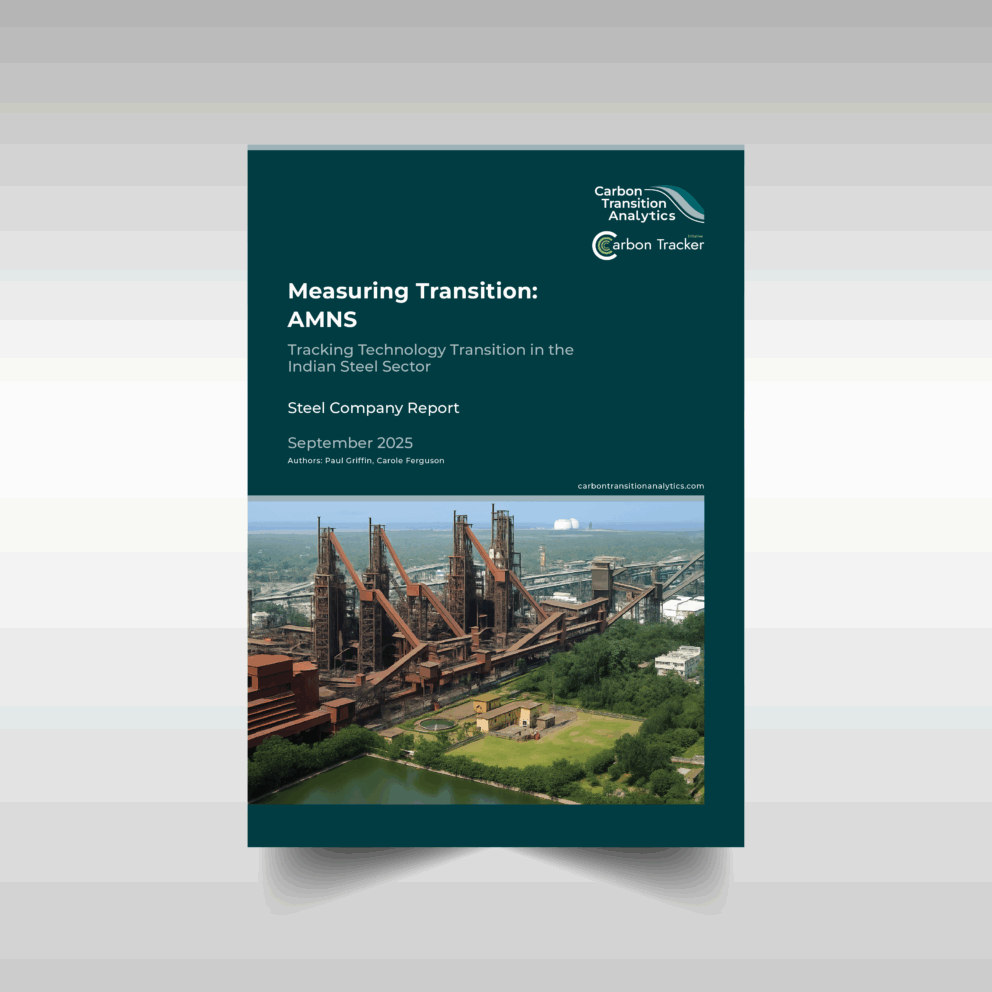AMNS: Measuring Transition
Tracking Technology Transition in the Indian Steel Sector: A Steel Company Report
To attract transition and concessional financing, Indian steel companies will need to produce credible transition plans. This report is the fourth in a series of company-focused assessments on the transition performance of the Indian steel majors.
While steel production is vital for India’s development goals, limited access to raw materials, natural gas, and steel scrap makes it difficult to scale without deploying carbon-intensive technologies. This strategy poses a threat to company CO2 targets and could impact future profitability.
In this report, we analyse the state and outlook for AMNS (ArcelorMittal Nippon Steel India) in its strategy to grow steel capacity to 40 Mtpa in India by 2035 while reducing CO2 intensity.
Key insights from the report include:
- AMNS does not have a net zero target – Insofar as AMNS does not specify a net zero target year, it does not have net zero target. Its CO2 goals align with India’s NDC, but only if its net zero target is assumed for 2070 or earlier.
- Limited access to carbon storage sinks for CCS – With most of AMNS’ proposed greenfield capacity situated in the east, the company is unlikely to gain timely access to carbon sinks.
- Capacity plans risk nearly double target emissions – AMNS’ plans entail around 60 Mtpa of BF-BOF capacity by the early 2040s, which could exceed its target carbon budget by nearly 100%.
- Capacity plans incompatible with India NDC – Even in the most optimistic CCS scenario, CO2 emissions from AMNS’ capacity plans would overshoot the sectoral budget as storage access arrives too late.
- Future projects carry high risk of carbon lock-in – Of an estimated US$68bn of future project capital, 75% falls into the high-risk category for carbon lock-in.
- Tangible steps towards optimised transition plan – To stay within a 2070 net zero carbon budget, AMNS can install no more than 4-5 new blast furnaces, yet it has up to 12 in the pipeline. Reconsidering its 24Mtpa Kendrapara project could avoid lock-in from 5 BFs.
- Options to reduce CBAM exposure – While CBAM tariffs could amount to a 33% cost penalty on EU exports in 2030, and 66% in 2034, AMNS can reduce this by focusing exports from its natural gas based DR-EAF capacity at Hazira.
